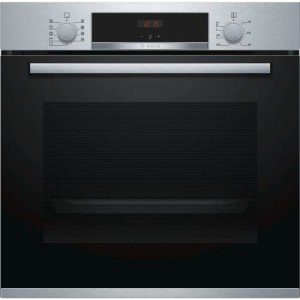The Future of Culinary Convenience: Integrated Ovens and Hobs
In the ever-evolving world of kitchen style, integrated ovens and hobs are at the forefront of modern cooking innovation. bulit-in ovens guarantee visual appeal however also improve functionality and efficiency, changing how we prepare our meals. As homeowners progressively look for to create smooth, stylish, and user-friendly cooking spaces, the combination of ovens and hobs offers an ideal solution. This short article explores what integrated ovens and hobs are, their benefits, and key considerations for those aiming to update their kitchen area.
What Are Integrated Ovens and Hobs?
Integrated ovens and hobs are kitchen area home appliances seamlessly built into the kitchen cabinetry or counters, instead of standing out as different entities. Integrated ovens are created to mix into cooking area systems, offering a flush surface with surrounding cabinetry. Similarly, integrated hobs are installed straight into the counter top, producing a streamlined look. This minimalist design technique not just raises the visual appeal of the cooking area however likewise makes the most of readily available area.
Types of Integrated Ovens
Single Ovens: These standalone units are created for simpleness and ease of use, featuring a single cooking chamber and several cooking modes such as baking, grilling, and roasting.
Double Ovens: Ideal for larger families or passionate cooks, double ovens offer two independent cooking compartments, enabling numerous dishes to be ready at the same time at different temperatures.
Mix Ovens: Blending traditional baking and steam cooking, mix ovens use versatility for numerous cooking requirements, keeping wetness while guaranteeing completely cooked meals.
Kinds Of Integrated Hobs
Gas Hobs: These hobs enable exact temperature level control and instant heat, making them a preferred among expert chefs and cooking enthusiasts.
Induction Hobs: Known for their efficiency and safety, induction hobs use electro-magnetic energy to heat pots and pans directly. They are quick to heat and cool down quickly, lowering the threat of burns.
Electric Hobs: Featuring smooth ceramic or glass surfaces, electric hobs are easy to clean and provide an even heat circulation for a range of cooking designs.
Advantages of Integrated Ovens and Hobs
1. Space Optimization
With the pattern of smaller sized living areas and open-concept homes, integrated home appliances help maximize cooking area area. By fitting flawlessly into cabinets, kitchens can appear bigger and more open, lessening mess and boosting visual appeal.
2. Visual Appeal
Integrated ovens and hobs supply a sleek, contemporary look that fits well within different design styles. The capability to customize kitchen cabinetry guarantees that property owners can achieve a cohesive appearance that matches their design, whether contemporary, traditional, or something in between.
3. Enhanced Functionality
Integrated home appliances typically come with advanced features such as wise innovation, self-cleaning choices, and numerous cooking modes. These improvements not just simplify the cooking process however also improve usability, making preparing a satisfying experience.
4. Safety Features
Integrated hobs, especially induction designs, are thought about much safer than conventional cooking surface areas. They cool off rapidly, minimizing the risk of burns, and often consist of features like child locks and automated shut-off for additional security.
Key Considerations When Choosing Integrated Ovens and Hobs
1. Space and Layout
Before buying integrated appliances, consider the space offered in your kitchen area. Procedure the cabinetry and countertops thoroughly to make sure a perfect fit, allowing for appropriate ventilation and setup space.
2. Cooking Needs
Assess your cooking habits and preferences. If you frequently entertain or cook large meals, a double oven might be the very best choice. Alternatively, if you're a periodic chef, a single oven might suffice. Likewise, picking between gas, electric, or induction hobs will depend upon your cooking design and convenience level.
3. Energy Efficiency
With rising energy expenses and growing ecological concerns, selecting energy-efficient home appliances can save money in the long run. Try to find products with high energy rankings and functions like programmable timers and eco-modes.

4. Quality and Brand
Buying top quality home appliances from reliable brand names ensures sturdiness and performance. Checking out consumer evaluations and seeking suggestions can help narrow down the best choices tailored to your requirements.
Conclusion
Integrated ovens and hobs are more than simply kitchen area home appliances; they represent a shift towards a more practical, stylish, and effective approach to cooking. As homeowners focus on smooth style, benefit, and advanced functions, these integrated options will undoubtedly form the kitchens of tomorrow. Whether remodeling a kitchen area or designing a new one from scratch, integrating ovens and hobs is a financial investment that assures to boost both culinary experiences and the general visual of the home.
